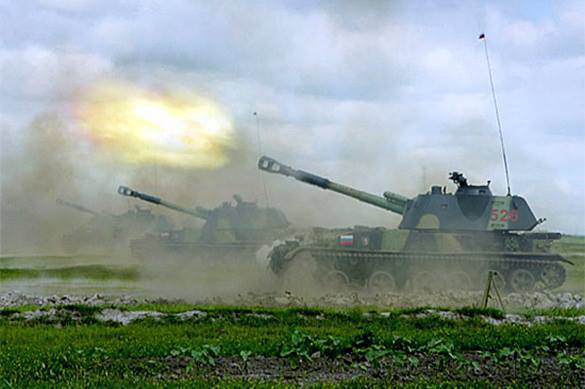Psychology on the most widespread means of manipulating the voter
It is no mystery that a big part of citizens make their political choice irrationally. The choice is usually grounded not in the analysis of the candidate’s political program and activities, but the image of the most necessary political persona needed at the moment which exists in mass consciousness.
The accordance of the candidate’s image with this persona becomes the main reason for choice. PR experts work on the formation and delivery of such images to the broad public, thus manipulating peoples’ choices. They create the desirable hero. However, this is only one, the most obvious, area of their work. There are other methods: more finite and less noticeable ones.
The most simple one is ‘direct suggestion,’ the direct induction of the candidate’s name and external appearance to the voter, sometimes with a call for action. Posters with the candidate’s face and name during electoral campaign are seen almost everywhere. The more frequently the voter sees these faces, the stronger the ‘recognition effect’ and the ‘formation’ of a positive attitude towards the candidate. The numerous repetition of direct calls: ‘for,’ ‘vote,’ ‘our choice’ etc. influence the people who have strong fears of participating in public social processes.


This level is the most primitive and influences the most archaic, ‘totem’ zones of the human psyche, thus making them choose following the principle of ‘ours – not ours’ or ‘familiar – unfamiliar.’ However, it is most effective in the regions with a low level of education and public self-awareness.
The ‘associative’ method of influence is slightly more complex; it lies in the ascribing of positive personal traits to the candidate’s image through mentioning them in public numerous times. These include well-chosen attire, the right gesture on a poster, the right test which claims that the candidate is ‘good,’ ‘strong,’ ‘reliable,’ ‘confident’ or ‘kind,’ ‘caring,’ ‘smart.’

Besides personal characteristics, the candidate may be associated with various social roles or processes, indirectly emphasizing and increasing their certain characteristics. As such, for example, ‘he helps children,’ ‘builds gyms,’ ‘restores monuments,’ ‘gives foodstuffs,’ ‘wants to return debts,’ etc. The emotional attitude the voters have to these processes is associatively transferred onto the candidate.

This method influences not the totem, but the fetishistic and animist layers of mass consciousness and encourages to equate the object with the emotional states that are frequently mentioned with it, and to give the object spiritual traits in light of their external manifestation.
There is a more complex type of influence, through the ‘actualization of relevant personal characteristics of the candidate,’ which allows to correct the public’s choices given the availability of several alternatives. For example, posters with mottos: ‘We need a strong president,’ ‘The time for intellectuals in politics has come’ or ‘A politician has to care for people,’ a direct emphasis on personal traits a candidate needs (‘young,’ ‘honest,’ ‘strong,’ ‘hard-working’), are a wonderful example of this method.

The ‘mythological’ method is a more complex and less noticeable form of psychological influence on choice. It presumes the analysis and usage of the expectations which already exist in mass consciousness that have to do with cultural types and, accordingly, psychotypes of the voters, by PR experts.
This sort of work is harder, as it demands a serious psychological investigation of the particularities of various electoral regions by experts, a deep understanding of the essence of psychotypes, neurotic needs of the people living in them. They need to examine the appearance of cross-cultural phenomena, when the same electoral region has representatives of various psychotypes.
As such, ascribing mythological personal characteristics to the candidate or the usage of mythological images which appeal to certain mythological scenarios may happen both textually (for example: ‘he is your savior’ or ‘he works like a slave on the gallows, or ‘sufferer, martyr’ etc.), and with the help of visual images and symbols (for example, a halo, a scepter, a sword, wings etc.).

They allow direct quotes from myths, wherein an event involving the candidate is described using the metaphors of the appropriate myth. For example: “The painful, unequal struggle between the vile oligarchs and the simple citizens of our down has ended, our candidate saved millions of families from hunger, cold, injustice etc.).
The usage of the mythological layer of the unconscious positions the candidate and voter as roles in the same scenario. Political events are shifted into the mythological space, and the voter loses their connection with ‘reality’ makes their choice, feeling themselves to be a part of the mythological scenario. Thus defining their emotional relations and, accordingly, their choice.
As a rule, the ‘mythological’ method is very widespread and is used as quite effective in light of the fact that most voters don't have appropriate cultural and psychological education.
What is more difficult in the context of manipulating the voter is the ‘formation of the political context’ without the intentional imposition of the necessary personal traits. The formation of the context of political, economic and cultural life of the country channels the psychological preferences of the voters, indirectly leading them to the obvious choice.
This way, for example, sets the context for ethnic or linguistic conflicts, the problem of the country’s accession to some international union or process, gas or territorial problems are nothing but a special group of scenarios which channel the voters’ attention and direct their choice towards the candidates that are able to influence the given context.
The finite nature of such manipulation also lies in the fact that within the framework of each context there are numerous options for decisions, which creates the sense of political pluralism, thus masking method of influence with democratic attributes.
In this case people vote not for the candidate, but for the solution of the problem, feeling the ‘freedom’ of choice.
It should also be noted that every higher level of influence may contain the previous ones. On the one hand, this gives an opportunity to influence more people less noticeably, on the other, it demands higher psychological and cultural qualification on part of PR experts.
For example, ‘democracy’ in the previous sample is a category of an even more complex level, the ‘ideological’ one. Its essence lies in spreading a number of ideological principles which describe the fundamental principles of world constructions in mass consciousness.
This approach does not only determine the candidate’s choice, but also the criteria of appraising their activities, discourse and value orientation and, essentially, they are not a psychological manipulation but a full-fledged political means of governance, as ideology determines the methods of influence.
An example of the manipulative use of this level are contemporary attempts to implement ‘communist beliefs’ with the help of financial instruments of influence. For example, paying for participating in protests or the implementation of ‘liberal’ views by authographic people with obvious nationalist views, for example, with the support of the domestic producer to develop free business.
This all comes down to one conclusion: the more a person knows in the fields of psychology and culture, the more difficult it is to manipulate them. Politicians in particular.
When preparing the article, the author used several scientific sources:
The Myth of the Rational Voter, a book by Brian Kaplan, economics professor at the George Mason University
Socio-psychological characteristics of voters as a factor in their liking of political leaders, a dissertation in psychology by Ph.D. candidate Vykhrystiuk O.V., 2001
Z. Freud, K. Horney, E. Fromm, M. Weber and others wrote about the strong influence of the unconscious on human behavior, political in particular.





